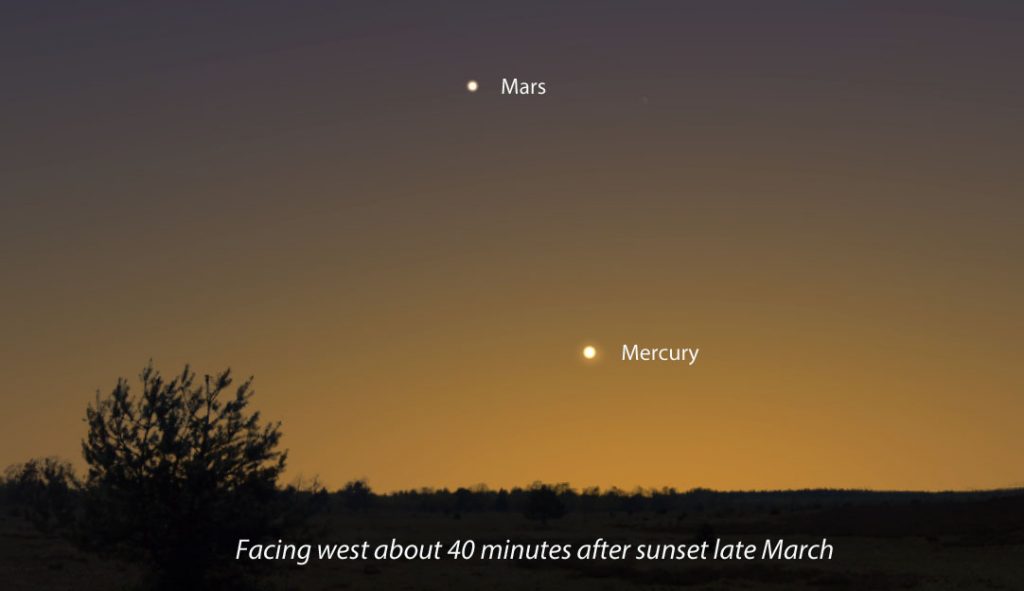
March has been a busy month for planet and comet watchers. Lots of action. Venus, the planet that’s captured our attention at dusk in the west for months, is in inferior conjunction with the Sun today. Watch for it to rise before the Sun in the eastern sky at dawn in about a week.
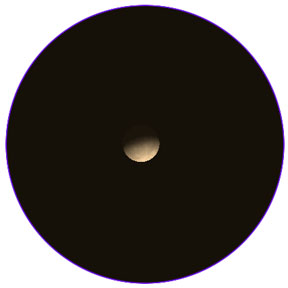
As Venus flees the evening scene, steadfast Mars and a new planet, Mercury keep things lively. For northern hemisphere skywatchers, this is Mercury’s best dusk apparition of the year. If you’d like to make its acquaintance, this week and next are best. And it’s so easy! Just find a spot with a wide open view of the western horizon, bring a pair of binoculars for backup and wait for a clear evening.
Plan to watch starting about 40 minutes after sundown. From most locations, Mercury will appear about 10° or one fist held at arm’s length above the horizon a little bit north of due west. Shining around magnitude +0, it will be the only “star” in that part of the sky. Mars is nearby but much fainter at magnitude +1.5. You’ll have to wait at least an hour after sunset to spot it.
Have a telescope? Check out the planet using a magnification around 50x or higher. You’ll see that it looks like a Mini-Me version of the Moon. Mercury is brightest when closest to full. Over the next few weeks, it will wane to a crescent while increasing in apparent size.
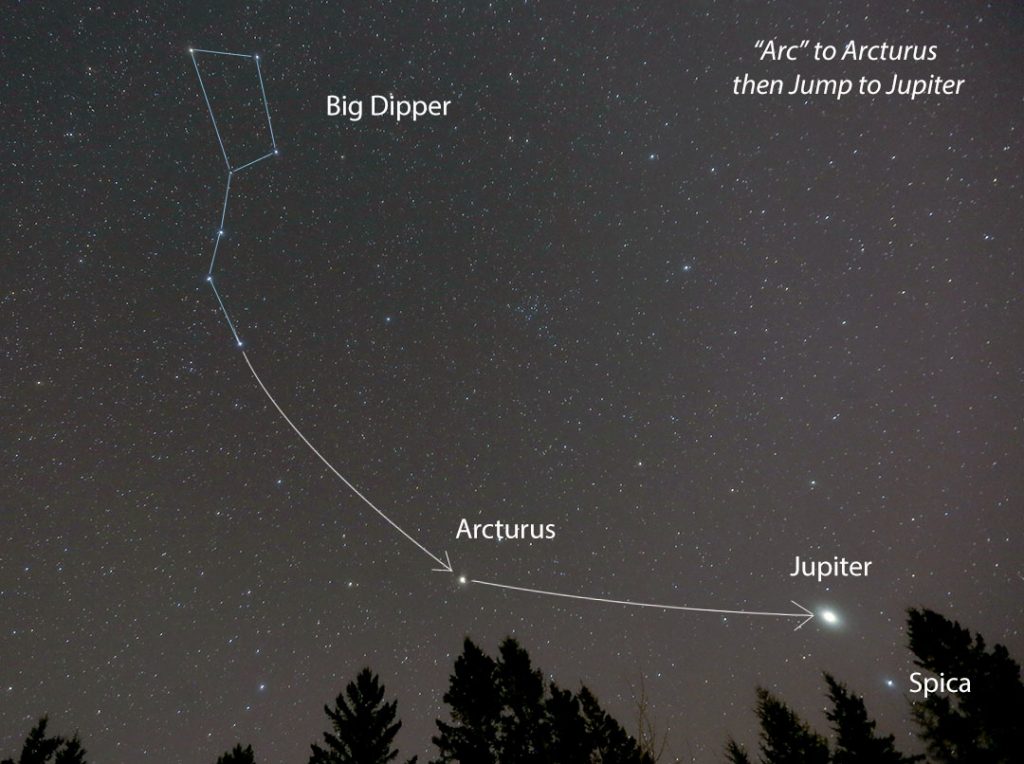
If you like planets, don’t forget the combo of Jupiter and Spica at the opposite end of the sky. Jupiter climbs out of bed and over the southeastern horizon about 9 p.m. local time in late March, but to see it and Spica, Virgo’s brightest star, give it an hour and look again at 10 p.m. or later. Quite the duo!
You’re not afraid of getting up with the first robins are you? If you set your alarm to a half hour or so before the first hint of dawn’s light and find a location with an open view of the southeastern horizon, you might be first in your neighborhood to spot Terry Lovejoy’s brand new comet. His sixth, the Australian amateur discovered C/2017 E4 Lovejoy on the morning of March 10th in the constellation Sagittarius at about 12th magnitude.
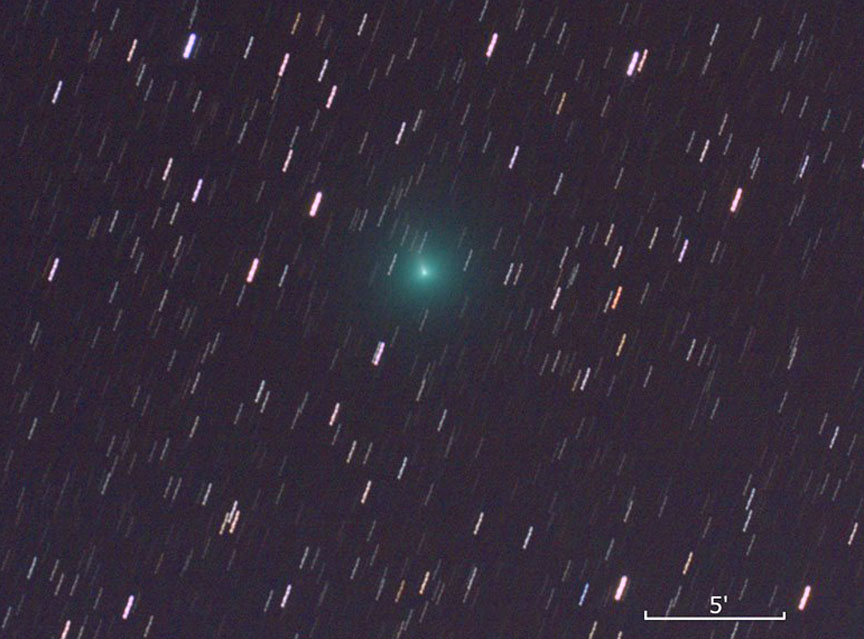
The comet has rapidly brightened since then and is now a small, moderately condensed fuzzball of magnitude +9, bright enough to spot in a 6-inch or larger telescope. Some observers have even picked it up in large binoculars. Lovejoy’s comet should brighten by at least another magnitude in the coming weeks, putting it within 10 x 50 binocular range.
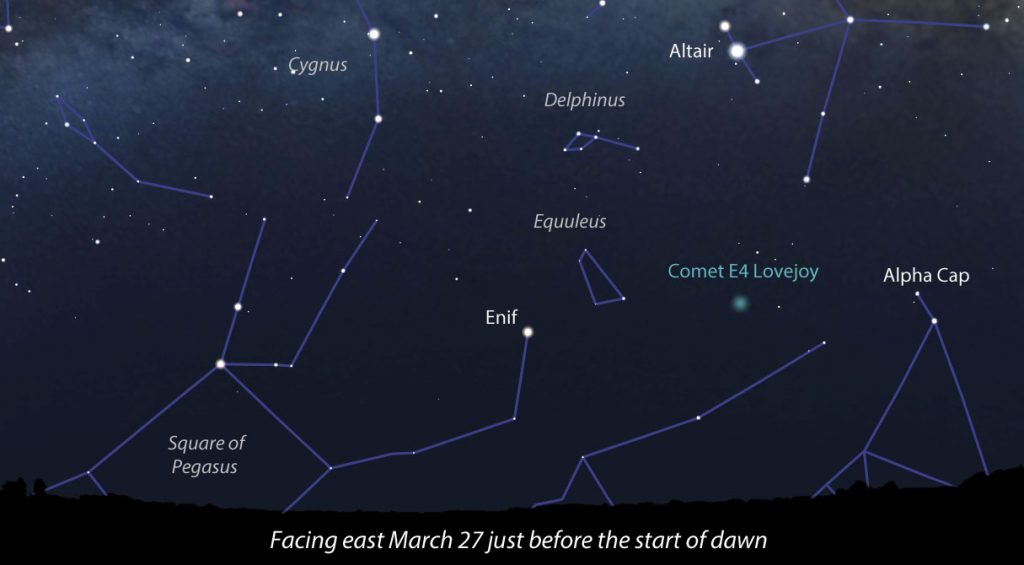
Good news. E4 Lovejoy is moving north rapidly and is now visible about a dozen degrees high in Aquarius just before the start of dawn. I’ll be out the next clear morning, eyepiece to eye, to welcome this new fuzzball from beyond Neptune to my front yard. The map above shows the eastern sky near dawn and a general location of the comet. Use the more detailed map below to pinpoint it in your binoculars and telescope.
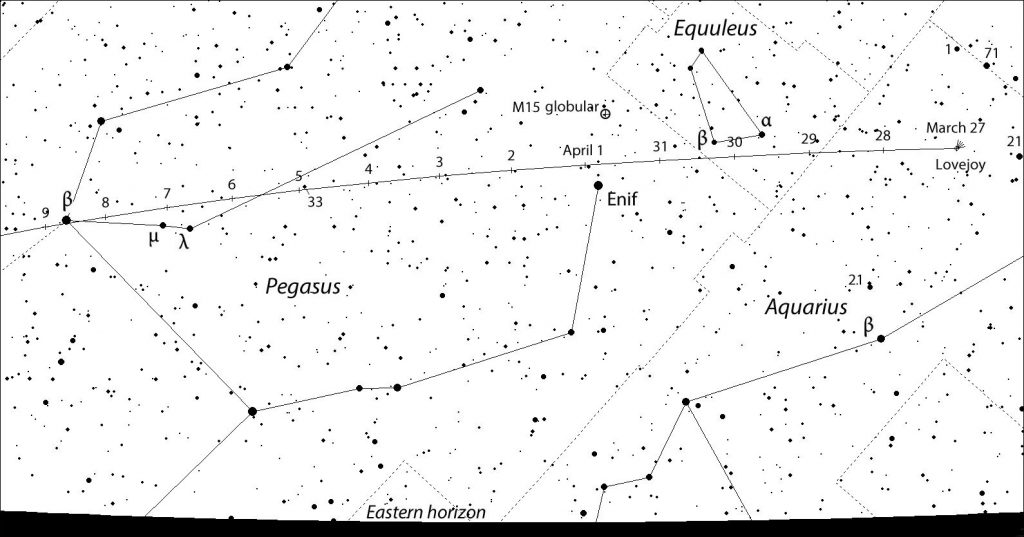
Spring brings with it a new spirit and the opportunity to get out at night free of the bite of mosquitos or cold. Clear skies!

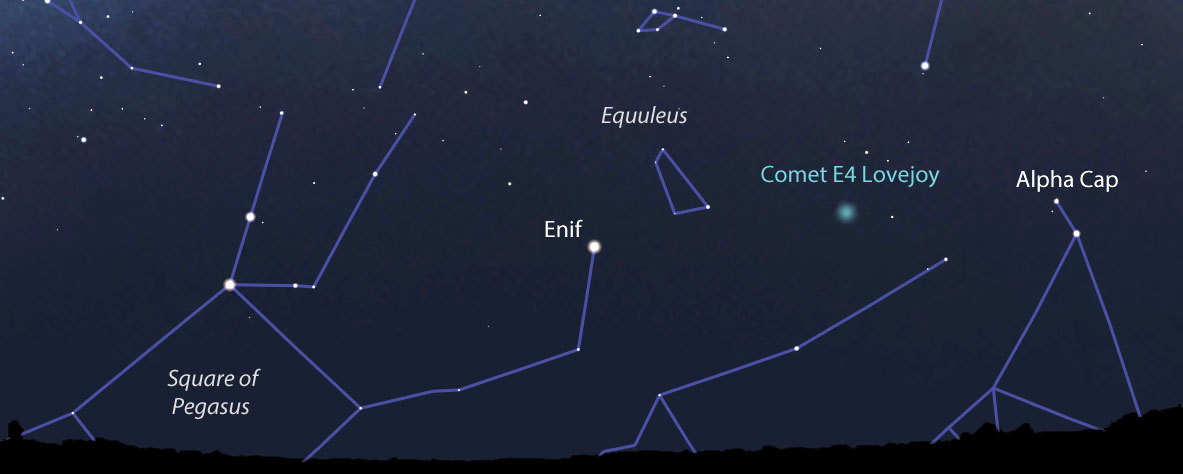
Thanks for the head’s up on Comet C2017/E4 Lovejoy Bob! Once again, you are right on top of it. And, I like your statement, “You’re not afraid of getting up with the first robins are you?” sounds like part of a poem? I don’t know which is harder? Getting up early to catch a morning apparition or staying up all night to see it? Hmm..
After months of rain and clouds the weather finally seems to be breaking here on the ‘left coast’? At least… the beginning of this week is looking good. FINALLY!
I recently downloaded a more updated (0.15.1) version of Stellarium and like ‘Astronomical Calculations’ section where they have listed visible comets. This automated feature makes it a whole lot easier to find them!
Thanks Aqua! Glad to hear the clouds are exiting. Here too. I saw that new version of Stellarium but haven’t tried it yet. Sounds like a nice improvement.
Bob, Im looking at your map, and is not M5 really M15?
Hi Chris – I just noticed the typo myself, came back here and see you caught it, too. Thanks! Now corrected.